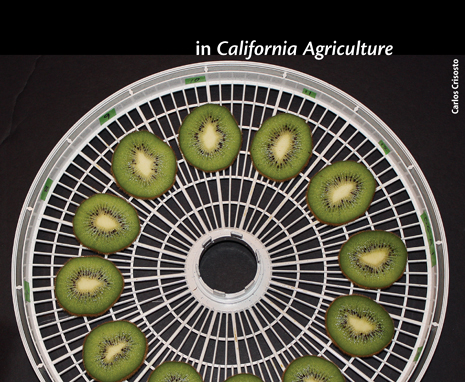All Issues
Coming Up in California Agriculture
Publication Information
California Agriculture 66(1):28-28.
Published online January 01, 2012
PDF | Citation | Permissions
Full text
Making a better kiwifruit
Kiwifruit is marketed worldwide. This globalization has created economic advantages for early and late harvests, when kiwifruit (shown, in a dehydrator) availability is low and prices are high. This situation has created incentives for early harvest or long-term storage, which can result in poor-quality kiwifruit in the market, thereby reducing repeat purchases and lowering overall demand. The current widely utilized quality measure for kiwifruit is based on soluble solids concentration at harvest, but it does not measure starch, inaccurately predicting the fruit's sugar concentration after postharvest ripening. A more reliable, fast and simple measure is needed to assure flavor and quality. In the next issue of California Agriculture journal, researchers report on the development of a new quality index based on dry matter concentrations, coupled with a consumer survey of local and imported kiwifruit marketed during the low-availability season (February-March).





